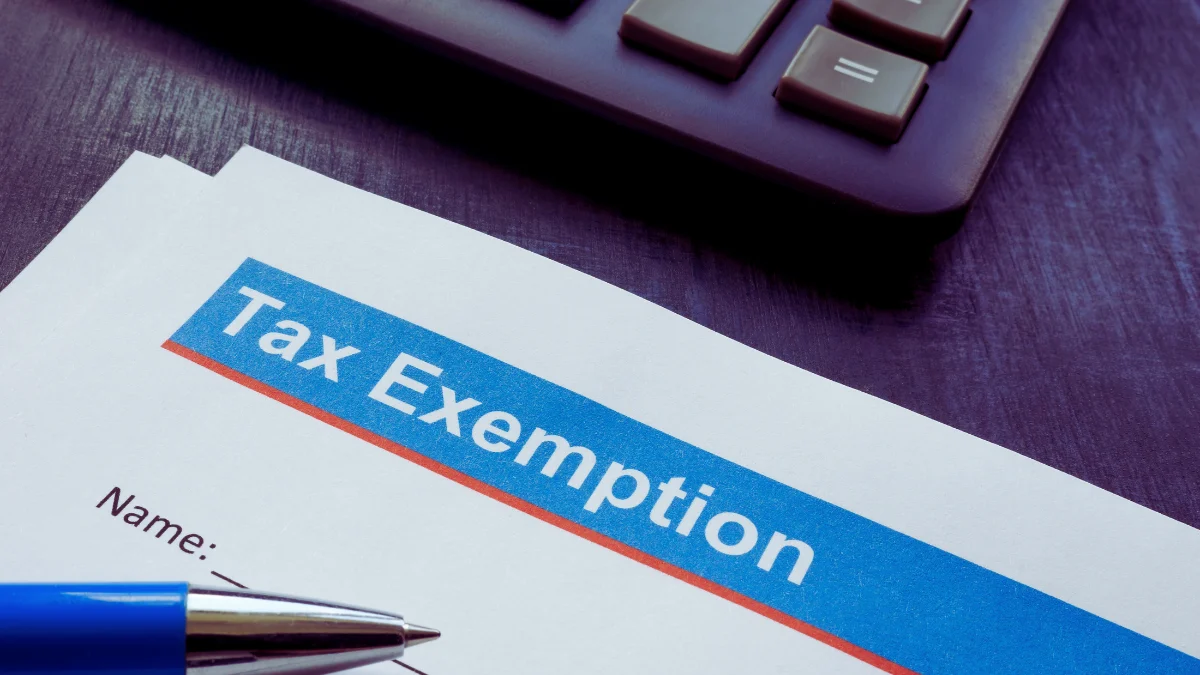You could save thousands on your 2025 taxes. But only if you act fast.
Congress just passed a tax law that created new deductions for tips, overtime, and more. Sounds great, right? Here’s the catch: most of these breaks disappear after 2028. Some vanish even sooner.
The One Big Beautiful Bill Act changed everything in July 2025. It provided workers and families with powerful new ways to reduce their tax bills. But it also put expiration dates on almost every benefit.
This means you have a small window to use them. Miss it, and you’ll pay more taxes while your neighbors who acted early keep more of their money.
In this guide, you’ll learn exactly which tax breaks are going away and when. You’ll see how much each one can save you. And you’ll get clear steps to claim them before time runs out.
Let’s get started. Your tax savings are waiting.
1. Tip Income Deduction: Save Up to $9,250 (Expires 2028)

Do you earn tips at work? You can now deduct up to $25,000 of that tip income from your taxes.
This works for waiters, bartenders, hairdressers, delivery drivers, and anyone else in jobs that traditionally receive tips. The government determines which jobs are eligible, and it’ll publish the full list by October 2, 2025.
Here’s how much you keep. If you earned $25,000 in tips and you’re in the 37% tax bracket, you save $9,250 on your federal taxes. That’s real money back in your pocket.
But there are income limits. The Congressional Joint Committee on Taxation estimates this tip deduction will cost the government $32 billion over 10 years, which shows how many workers will benefit. The deduction starts shrinking once you earn over $150,000 if you’re single, or $300,000 if you’re married filing jointly. For every $1,000 you earn above that, you lose $100 of the deduction.
Important: You still pay Social Security and Medicare taxes on tips. This only reduces your federal income tax.
What to do now:
- Keep detailed records of all tips you receive in 2025
- Make sure your employer reports tips correctly on your W-2
- File jointly if you’re married to get the higher limit
- Check if your job makes the eligible list when it comes out
You have until the end of 2028 to use this break. After that, it’s gone.
2. Overtime Pay Deduction: Keep More of What You Earn (Expires 2028)

Work overtime? You can now deduct some of that overtime pay from your taxes.
The deduction covers up to $12,500 if you’re single or $25,000 if you’re married filing jointly. But here’s the twist: only the “extra” half of your overtime pay counts.
Let me explain. Say you normally earn $20 per hour. When you work overtime, you get $30 per hour (that’s time-and-a-half). Only the extra $10 per hour qualifies for this deduction. The regular $20 doesn’t count.
Your employer has to mark your overtime pay on your W-2 form. In 2025, they can estimate it. After that, they need to track it exactly.
The same income limits apply to the tip deduction. Once you earn over $150,000 (single) or $300,000 (married), the benefit starts disappearing.
Quick example: A nurse who works 200 overtime hours at $40/hour base pay:
- Overtime rate: $60/hour
- Extra portion: $20/hour
- 200 hours × $20 = $4,000 deductible
- Tax savings in 22% bracket: $880
Action steps:
- Ask your employer how they’ll track overtime on your W-2
- Calculate if the phase-out affects you
- Keep your own overtime records as backup
- Use it while it lasts through 2028
This break expires December 31, 2028. Mark your calendar.
3. SALT Deduction Jumps to $40,000 (Back to $10,000 in 2030)

Live in a high-tax state? This one’s huge for you.
The state and local tax (SALT) deduction just went from $10,000 to $40,000. That’s four times bigger. If you pay a lot in state income tax and property tax, you can now deduct way more.
This helps people in California, New York, New Jersey, Connecticut, and other states with high taxes.
But it doesn’t last forever. In 2030, it drops back to $10,000. You have five years to benefit.
And high earners get less. Once your income hits $500,000 (married filing jointly) or $250,000 (single), the benefit shrinks by 30 cents for every dollar you earn above that. But even if you earn way more, you’re guaranteed at least a $10,000 deduction.
Real savings: A couple in New Jersey earning $450,000 and paying $35,000 in state and local taxes:
- 2025-2029: Deduct the full $40,000
- Tax savings: $14,800 per year in the 37% bracket
- Total savings over 5 years: $74,000
Compare that to the old $10,000 limit, and they save an extra $11,100 every year.
What you need to do:
- Add up your state income tax and property tax for 2025
- See if it’s over $10,000 (if not, the standard deduction might be better)
- Consider bunching property tax payments into years before 2030
- Talk to a tax advisor about state pass-through entity taxes if you own a business
Use this expanded deduction through 2029. Then it shrinks again.
4. Extra $6,000 Deduction for Seniors (Expires 2028)

Are you 65 or older? You get an extra $6,000 deduction just for being a senior.
This is on top of the regular standard deduction. If you’re married and both spouses are 65+, you each get $6,000. That’s $12,000 total.
You don’t have to itemize to get it. It’s automatic if you qualify.
But there’s an income cap. The deduction starts fading at $75,000 for singles and $150,000 for married couples. It disappears completely at $175,000 (single) or $250,000 (married).
The math: A retired couple, both 66, with $140,000 in income:
- Regular standard deduction 2025: $31,500
- Extra senior deduction: $12,000
- Total: $43,500 off their taxable income
- Tax savings: Up to $2,640 in the 22% bracket
That’s an extra $2,640 in their pocket compared to younger taxpayers.
To claim it:
- Make sure your birthdate is on your tax return
- Check if the income limits affect you
- File jointly if married to get both deductions
- You don’t need any special forms
This bonus deduction lasts through 2028. Use it every year you can.
5. Auto Loan Interest Deduction: Save on Your Car Payment (Expires 2028)

Bought a car? You might be able to deduct up to $10,000 of the interest on your car loan.
This is new. It only works if your car was made in America (final assembly must be in the U.S.). And it has to be for personal use, not business.
The deduction begins to phase out once your income exceeds $100,000 if you are single, or $200,000 if you are married.
Here’s what you could save: Say you bought a $50,000 pickup truck with a loan at 7% interest:
- First year interest: about $3,500
- Tax savings in 22% bracket: $770
- Over four years (2025-2028): roughly $2,400 total savings
Not a fortune, but it helps.
Before you count on this:
- Check where your vehicle was assembled (it’s on the door sticker)
- Calculate if your income is too high
- Keep records of all interest paid
- Remember, it ends after 2028
If you’re planning to buy a car soon, doing it before 2029 could save you money on taxes.
6. Electric Vehicle Credits: Last Chance (Expires September 2025)

Want an electric car? You have weeks, not years.
The EV tax credit ends September 30, 2025. After that, it’s gone completely.
Right now you can get:
- Up to $7,500 for a new electric vehicle
- Up to $4,000 for a used EV
- Credits for commercial EVs
But there are a lot of rules. The car has to cost less than a certain amount. Your income can’t be too high. And the car has to be made with certain materials and in certain places.
Why this matters: The Congressional Budget Office studied the impact of these credits. Their analysis shows these EV incentives are among the first clean energy provisions being eliminated, with the credits generating $25 billion in claims before the September deadline.
Your deadline is close:
- New EV credit: Gone after September 30, 2025
- Used EV credit: Also gone September 30, 2025
- EV charger credit: Ends June 2026
If you’re thinking about buying an electric vehicle, you need to do it now. Once these credits expire, they’re not coming back.
Fast action needed:
- Order your EV before September 30
- Make sure it qualifies (check fueleconomy.gov)
- Verify the dealer can apply the credit at purchase
- Don’t wait and miss out on $7,500
This is the most urgent deadline in this entire list.
7. Home Energy Credits: Upgrade Before December 31, 2025

Installing solar panels? Getting a heat pump? Replacing windows? You can get tax credits for making your home more energy efficient.
But these credits end on December 31, 2025. You have months, not years.
Two credits are ending:
Energy Efficient Home Improvement Credit: Up to $3,200 per year for things like:
- Heat pumps
- Energy-efficient windows and doors
- Insulation
- Central air conditioning
Residential Clean Energy Credit: 30% of the cost for:
- Solar panels (no limit on the credit)
- Solar water heaters
- Wind turbines
- Battery storage
Example: Installing $20,000 worth of solar panels:
- Credit: $6,000 (30% of cost)
- You pay: $14,000 after the credit
- The system might save you $100+ on electric bills each month
After December 31, 2025, these credits disappear. If you’re planning home energy upgrades, do them this year.
Your checklist:
- Get quotes from contractors now
- Make sure they can finish work by December 31
- Keep all receipts and manufacturer certifications
- File Form 5695 with your 2025 tax return
Once 2026 starts, these credits are history.
8. Bonus Depreciation: Write Off Business Equipment Immediately

Own a business? You can deduct the full cost of the equipment you buy right away. No waiting years for depreciation.
This is called 100% bonus depreciation. It’s permanent now through 2029.
Buy a $100,000 piece of equipment, and you can deduct the entire $100,000 on your 2025 taxes. That saves you up to $37,000 if you’re in the 37% tax bracket.
This works for:
- Machinery and equipment
- Computers and software
- Vehicles over 6,000 pounds
- Furniture and fixtures
Manufacturing buildings get special treatment, too. If you start construction by December 31, 2028, or finish by December 31, 2030, you can write off the full cost immediately.
Business example: A contractor buys:
- New truck: $60,000
- Tools and equipment: $15,000
- Computer system: $5,000
- Total: $80,000 immediate deduction
- Tax savings in 24% bracket: $19,200
That’s real money back in your business right away. Better cash flow. More money to grow.
To use this:
- Buy and place equipment in service by December 31 each year
- Keep detailed records of purchases
- Tell your accountant you want bonus depreciation
- Consider buying before 2029 for manufacturing structures
This one lasts through 2029, but why wait? The sooner you invest, the sooner you save.
9. Charitable Giving: Donate More in 2025

Planning to give money to charity? Do it in 2025, not 2026.
Starting in 2026, there’s a new rule. You have to give more than 0.5% of your income before you can deduct anything.
Let me show you why this matters.
Same donation, different years:
2025 rules:
- You earn $200,000
- You donate $10,000 to charity
- You can deduct the full $10,000
2026 rules:
- You earn $200,000
- 0.5% of income: $1,000
- You donate $10,000 to charity
- You only deduct $9,000 (the amount over $1,000)
You lose a $1,000 deduction just because you waited one year.
For bigger earners, this hurts more. If you make $500,000, the floor is $2,500. Any donations under that don’t count.
Smart strategy: If you’re planning large charitable gifts over the next few years, bunch them into 2025.
Instead of: $10,000 in 2025 and $10,000 in 2026, do this: $20,000 in 2025
You avoid the new floor and maximize your deduction.
Action plan:
- Make your 2026 and 2027 planned donations in 2025
- Use a donor-advised fund if you want to give the money to charities later
- Get receipts for everything
- This is especially important if you’re a big giver
Give generously in 2025. Your taxes will thank you.
10. Qualified Business Income Deduction: Now Permanent at 20%

Run a small business? You can deduct 20% of your business income right off the top.
This used to expire in 2025. Now it’s permanent.
If your business makes $100,000, you can deduct $20,000. That saves you up to $7,400 in the 37% tax bracket.
This works for:
- Sole proprietors
- Partnerships
- S corporations
- LLCs
But there are limits if you earn too much. For 2025, things get complicated above $394,600 for married couples.
Good news: Starting in 2026, there’s a minimum deduction. If you have at least $1,000 of business income and you actively work in the business, you get at least $400 deducted. That helps people just starting.
Real example: A freelance graphic designer making $150,000:
- Business income: $150,000
- QBI deduction: $30,000 (20%)
- Tax savings in 24% bracket: $7,200 per year
That’s $7,200 they keep instead of sending to the IRS.
What you need to know:
- This is permanent now, so plan long-term
- Keep good records of business income
- If you’re in health, law, or consulting and earn a lot, special rules apply
- The deduction works whether you itemize or take the standard deduction
This was set to disappear. Now you can count on it every year.
11. Estate Tax Exemption Jumps to $15 Million Per Person

Have significant wealth? The amount you can pass to heirs tax-free is going up.
In 2025, it’s $13.99 million per person. In 2026, it jumps to $15 million. For married couples, that’s $30 million combined.
And it’s permanent. It will keep growing with inflation every year.
This is huge for estate planning. The exemption was supposed to drop to about $7 million in 2026. Instead, it’s going up.
The estate tax rate on amounts above the exemption is still 40%. But most families won’t pay it at all with a $15 million cushion.
Planning example: A couple with $25 million in assets:
- Combined exemption 2026: $30 million
- Amount taxable: $0
- Estate tax: $0
If the exemption had dropped to $7 million each ($14 million total), they would have owed $4.4 million in taxes on the extra $11 million.
You can also give away up to $19,000 per person per year without it counting against your lifetime exemption. So a couple could give $38,000 to each of their kids and grandkids every year, tax-free.
What to do:
- Review your estate plan with the new numbers
- Consider if you still need complex trusts designed for lower exemptions
- Make annual gifts to reduce your taxable estate
- Update your will if needed
The Tax Policy Center analyzed the distributional effects of the estate tax changes. Their research shows that households in the top 1% will pay 3.1% less of their income in taxes when these higher exemptions are in place permanently.
This is good news for families trying to pass wealth to the next generation.
12. Trump Accounts: Free $1,000 for Babies Born 2025-2028

Having a baby between 2025 and 2028? The government gives you $1,000 to start a savings account for them.
It’s called a Trump Account. It’s a special tax-favored account for kids under 18.
Here’s how it works:
- Baby born in eligible years gets an automatic $1,000 deposit
- You can add up to $5,000 per year
- Employers can chip in up to $2,500 per year
- The money grows tax-deferred
- The kid can’t touch it until age 18
- When they turn 18, they can deduct contributions from their taxes
Quick math: $1,000 starting balance, plus $5,000 per year for 18 years at 7% growth equals roughly $203,000 by age 18.
That’s a nice head start for college, a first home, or starting a business.
Rules to know:
- Only for babies born 2025-2028 under the pilot program
- Kids born after 2028 might not get the free $1,000
- Contributions aren’t tax-deductible while the kid is a minor
- Can’t withdraw early without penalties
Setting it up:
- The government handles the initial $1,000 deposit
- You set up the account through approved financial institutions
- Contribution limits will adjust for inflation after 2027
- Keep making contributions even after the kid turns 1
If you’re having a baby during these years, you get free money from the government. Don’t leave it on the table.
What to Do Right Now

You’ve seen the 12 tax breaks and when they expire. Now here’s your action plan.
Do this week (Immediate deadlines):
- EV purchase: Order before September 30, 2025, if interested
- Home energy upgrades: Get contractor quotes for work before December 31, 2025
- Review your income to see which breaks you qualify for
Do this month:
- Set up tip and overtime tracking if you qualify
- Calculate your potential SALT deduction with higher limits
- Make large charitable donations in 2025 instead of 2026
- Check if a new baby qualifies for a Trump Account
Do before December 31, 2025:
- Claim home energy credits
- Make business equipment purchases for bonus depreciation
- Bunch charitable donations to avoid the 2026 floor
- Review estate plan with new exemption amounts
Do before December 31, 2028:
- Maximize tips and overtime deductions every year
- Use the senior deduction if you’re 65+
- Claim auto loan interest if eligible
- Keep using expanded SALT through 2029
Most of these breaks aren’t coming back once they expire. The government gave you a limited-time offer to keep more of your money.
The taxpayers who win are the ones who take action. The ones who lose are those who learn about these breaks after they’re already gone.
You now know what’s available and when it ends. That puts you ahead of most people.
Make a plan. Mark the deadlines on your calendar. And talk to a tax professional about your specific situation.
Your tax savings are waiting. Go get them.

